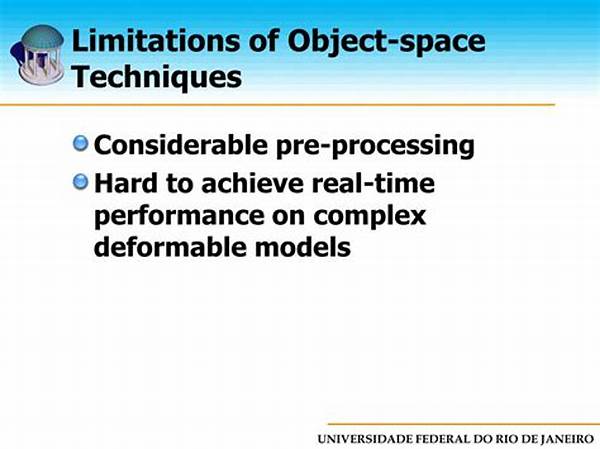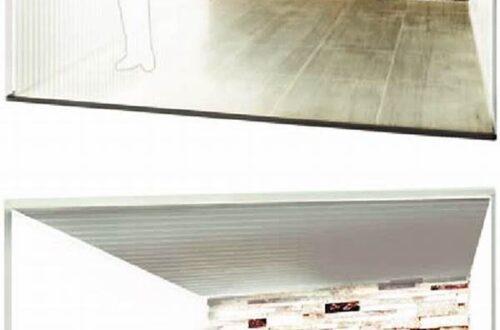Hey there, fellow tech enthusiasts! Ever wondered how video games and simulations keep their worlds running so smoothly? Well, strap in, because today we’re diving into the intriguing world of broad-phase spatial partitioning techniques. It’s a bit of a mouthful, but these techniques are the unsung heroes of digital worlds, making them efficient and responsive. Ready to learn more? Let’s go!
Read Now : “player-driven Storytelling Mechanics”
Understanding Broad-Phase Spatial Partitioning Techniques
Imagine you’re at a massive concert. Thousands of people are milling about, yet you and your friends want to carve out a small space where you can hang out without feeling too cramped. Now, apply that concept to digital worlds where objects constantly move around. Broad-phase spatial partitioning techniques are like the ultimate crowd managers, ensuring that each object gets its allocated space for efficient interaction.
At the most basic level, these techniques help categorize and group objects in a virtual environment. They create a grid-like system that divides the world into manageable sections, reducing the computational load when calculating interactions. So, when a character in a game moves, the system doesn’t need to check against every other character – just the ones nearby in the same grid section. It’s like sorting library books: broad-phase spatial partitioning techniques act as the Dewey Decimal System of the digital realm, keeping everything organized and easy to access.
For game developers and graphics programmers, these techniques are essential in optimizing performance. Because fewer calculations mean faster execution and smoother gameplay, broad-phase spatial partitioning techniques are crucial. They keep everything running seamlessly behind the scenes, allowing us to enjoy immersive experiences without a hitch.
Key Techniques in Broad-Phase Spatial Partitioning
1. Uniform Grid: This technique splits the world into equal-sized cells. Broad-phase spatial partitioning techniques like this keep track of objects located in each cell, making collision detection swift and efficient.
2. Quadtree: Used mainly in 2D environments, a quadtree is a recursive structure dividing space into four quadrants. Broad-phase spatial partitioning techniques like quadtrees shine in scenarios with varying densities of object distribution.
3. Octree: Similar to quadtrees but for 3D spaces, octrees segment the world into eight sections. These broad-phase spatial partitioning techniques excel at handling large, complex spaces with dynamic objects.
4. Bounding Volume Hierarchy (BVH): This technique includes bounding volumes over objects, creating a hierarchy. Broad-phase spatial partitioning techniques using BVH are perfect for scenes with numerous hierarchical objects.
5. Sweep and Prune: By sorting object coordinates along an axis, this technique reduces pairs to test collisions. It’s one of the broad-phase spatial partitioning techniques that’s both simple and effective.
Benefits of Broad-Phase Spatial Partitioning Techniques
Broad-phase spatial partitioning techniques might sound complex, but boil it all down, and you’ll find they’re the unsung heroes of digital space management. Imagine a bustling digital city brimming with endless interactions. These techniques help streamline processes, boosting performance significantly. The fewer objects your system needs to check for interactions, the faster and smoother the simulation runs. This is why they’re crucial in industries from gaming to robotics.
Moreover, broad-phase spatial partitioning techniques are a great tool for allocating resources efficiently. By partitioning space, systems reduce latency, making real-time interactions snappier. In gaming, for instance, these techniques prevent that dreadful lag during an intense boss fight. And in applications like virtual reality, they contribute to the immersion by ensuring environments respond quickly to user actions.
Effectively, they enable developers to scale applications more effectively. A solid understanding of broad-phase spatial partitioning techniques can result in impressive optimizations, paving the way for more complex and immersive simulations. For anyone diving into this field, mastering these techniques uncovers a realm of possibilities, ensuring that applications stand up to even the heaviest computational demands.
Challenges in Broad-Phase Spatial Partitioning Techniques
Even with all their benefits, broad-phase spatial partitioning techniques aren’t without their quirks.
1. Complexity in Implementation: Crafting these systems requires a deep understanding of both the simulated environment and the underlying algorithms. Not always a walk in the park!
2. Dynamic Environments: Things get tricky when objects frequently move or change. Broad-phase spatial partitioning techniques need frequent updates to remain effective.
3. Data Structure Overhead: While organizing data is helpful, the overhead from structures like octrees can become a bottleneck if not managed properly.
4. Scalability: Broad-phase spatial partitioning techniques must perform efficiently at scale, especially in vast digital worlds.
5. Balancing Granularity: Too coarse, and you lose detail; too fine, and you drown in data. Hitting the sweet spot in broad-phase spatial partitioning techniques can be challenging.
6. Adaptability: Some techniques work better in specific scenarios. Choosing the right one isn’t always straightforward.
Read Now : Multi-country Trademark Litigation Processes
7. Resource Management: As environments get more complex, ensuring technical and computational resources are used optimally becomes critical.
8. Parallel Processing Compatibility: Ensuring that these techniques can efficiently run on multi-core processors is key to achieving maximum performance.
9. Update Frequency: Deciding how often to update partitions affects accuracy and performance.
10. Testing and Debugging: Debugging broad-phase spatial partitioning techniques can be arduous due to their intricate nature.
Getting Started with Broad-Phase Spatial Partitioning Techniques
If you’re as intrigued by broad-phase spatial partitioning techniques as I am, then you’re probably wondering where to start! Picking this fascinating topic as your new programming project is a step towards understanding how digital worlds function. But where to begin?
First, familiarize yourself with the basics, like grids and trees. Whether 2D or 3D environments, mastering grid partitioning provides a solid foundation. Choose a platform or programming language that you’re comfortable with, and start small. Build simple prototypes to learn how broad-phase spatial partitioning techniques work in everyday scenarios.
Then, move to more advanced systems like quadtrees, octrees, or BVH. Each has its strengths and weaknesses, but understanding broad-phase spatial partitioning techniques’ nuances could help you discover where your passion truly lies. The key is experimentation! Dive into online communities or forums to learn from others who’ve already taken the plunge.
Ultimately, the journey into broad-phase spatial partitioning is about pushing boundaries and achieving optimization that once seemed elusive. It’s such a fun and rewarding field because every discovery enhances game development and simulation capabilities. Embrace experimentation, seek resources, and let the innovative ideas flow!
Future of Broad-Phase Spatial Partitioning Techniques
The landscape of broad-phase spatial partitioning techniques is ever-evolving, driven by advancements in technology and increasing demands for realism. As digital worlds grow ever more intricate, the importance of these techniques becomes even more pronounced.
One exciting prospect is the integration of artificial intelligence into broad-phase spatial partitioning techniques. By utilizing AI, systems could learn and adapt to optimal partitioning strategies, further enhancing performance. This combination could unlock a realm of possibilities, particularly in adaptive environments and autonomously adjusting simulations.
Moreover, as hardware continues to grow more powerful, there’s potential to explore even finer levels of granularity within broad-phase spatial partitioning techniques. Imagine virtual worlds with astonishingly precise interactions, all running seamlessly, thanks to exceptional partitioning strategies. The future of game development, simulations, and digital spaces, in general, is bright, with broad-phase spatial partitioning techniques leading the charge.
In the end, while current techniques are impressive, the potential for growth is limitless. As more brilliant minds tackle the challenges faced and discover innovative solutions, we can expect the digital world to become even more dynamic, responsive, and spectacular.
Wrapping Up
So, there you have it, folks—an exciting peek into the world of broad-phase spatial partitioning techniques! It’s amazing how much goes into creating these complex digital realms we interact with daily. While the topic might initially seem daunting, once you break it down, it becomes a fascinating exploration of managing digital space.
From understanding the core techniques to exploring the latest advancements, broad-phase spatial partitioning techniques open doors to better performance, optimized environments, and limitless possibilities. They’re the silent powerhouses ensuring our digital experiences remain immersive and efficient.
As technology continues to evolve, who knows what exciting developments lie just over the horizon? Whatever future innovations arise, broad-phase spatial partitioning techniques will undoubtedly play a crucial role in shaping the landscapes of tomorrow’s digital worlds. Keep learning, exploring, and pushing boundaries. Until next time, happy coding!





